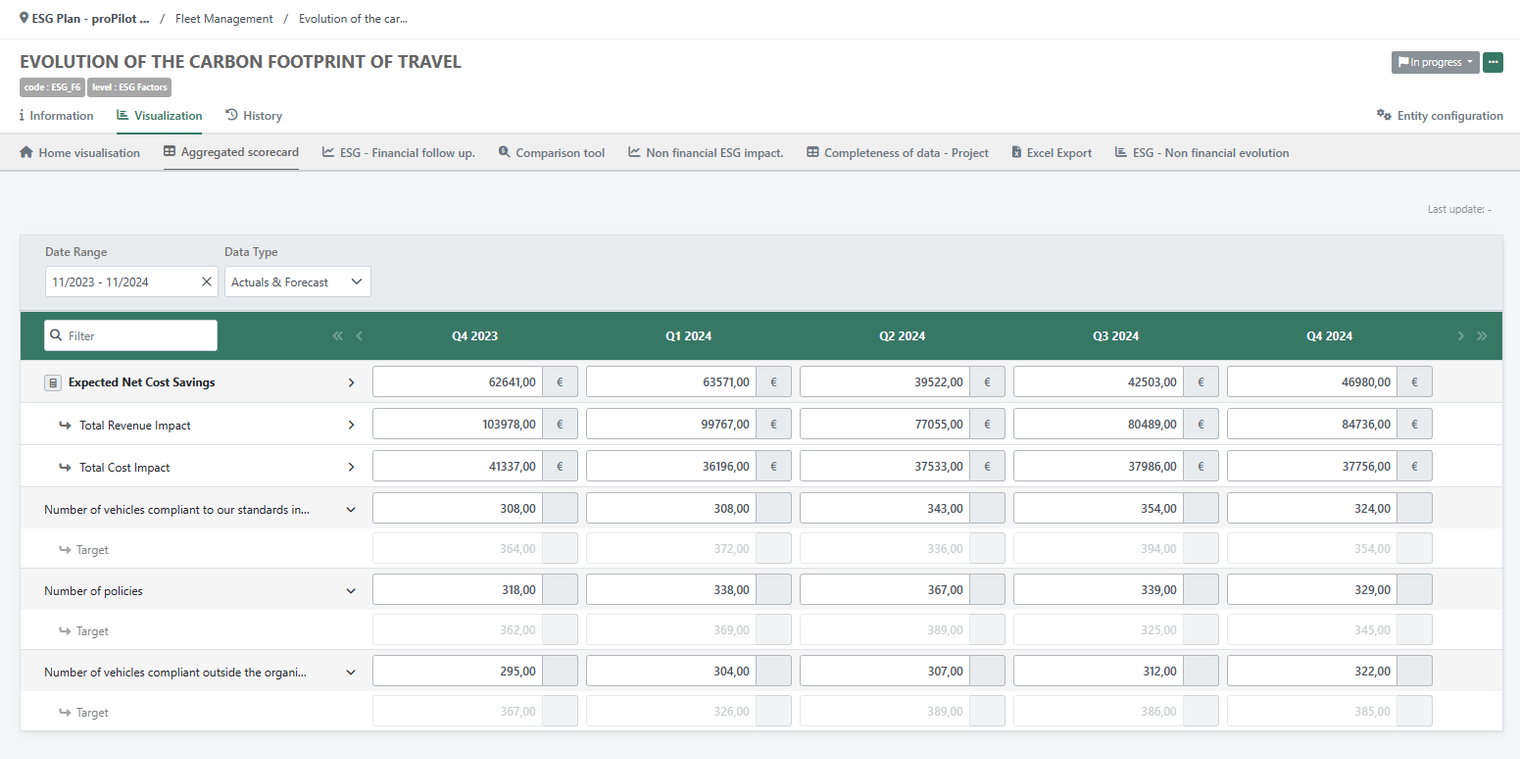KPIs Versus OKRs
Measuring performance and setting goals are critical for success. Two popular methodologies used by organizations to track progress are Key Performance Indicators (KPIs) and Objectives and Key Results (OKRs). While both serve similar purposes, they have distinct characteristics that set them apart. In this article, we will try to understand their differences, benefits, and how they can be integrated into an effective business transformation strategy.
What are Key Performance Indicators (KPIs)?
What KPIs are? What is their significance in measuring performance?
KPIs are quantifiable metrics that help organizations track progress towards specific goals and objectives. They provide insights into the effectiveness of strategies and enable organizations to make data-driven decisions.
Defining KPIs
When defining KPIs, it’s essential to align them with the organization’s overall mission and objectives. Whether it’s increasing sales, improving customer satisfaction, or enhancing operational efficiency, KPIs should reflect the critical areas that drive success.
The Purpose of KPIs
KPIs serve various purposes within an organization. They help management monitor performance, identify areas of improvement, and make informed decisions based on accurate data. KPIs also play a significant role in setting performance expectations, motivating employees, and fostering a culture of accountability.

Benefits of Using KPIs
The benefits of KPIs are manifold.
- hey provide clarity and focus by establishing clear targets and benchmarks for performance. KPIs also enable organizations to objectively evaluate progress and identify areas where additional efforts are required. Moreover, by aligning KPIs with the organization’s overall strategy, they help drive collaboration and ensure everyone is working towards the same objectives.
- Furthermore, KPIs can help organizations identify trends and patterns that may not be immediately apparent. By analyzing the data collected through KPIs, organizations can uncover valuable insights that can inform future strategies and decision-making. For example, if a company notices a consistent increase in customer satisfaction scores after implementing a specific customer service training program, they can use this information to further refine their training initiatives and improve overall customer experience.
- In addition, KPIs can also be used to benchmark performance against industry standards or competitors. By comparing their own KPIs with those of similar organizations, companies can gain a better understanding of their relative position in the market and identify areas where they may need to catch up or excel. This benchmarking process can provide valuable insights and serve as a catalyst for continuous improvement.
Exploring Objectives and Key Results (OKRs)
While KPIs are focused on measuring performance, OKRs take a different approach by emphasizing goal setting and alignment. Originally popularized by Intel and later adopted by organizations like Google, OKRs provide a framework for defining and communicating goals across the entire organization.
What are OKRs?
OKRs consist of two components: Objectives and Key Results. Objectives represent ambitious and measurable goals that guide the organization’s direction. Key Results, on the other hand, are specific and measurable targets that indicate progress towards achieving the objectives. When combined, Objectives and Key Results create a powerful system that ensures focus and alignment across teams and departments.
The Role of OKRs in Business Strategy
OKRs play a crucial role in linking individual and team goals to the organization’s strategic objectives. By cascading objectives throughout the organization, OKRs ensure that everyone is working towards a common vision. This alignment fosters collaboration, breaks down silos, and enables a more agile and responsive approach to goal setting.
Advantages of Implementing OKRs
The advantages of implementing OKRs are numerous.
- OKRs encourage a results-oriented mindset by focusing on outcomes rather than just activities. They promote transparency and accountability by making goals and progress visible to everyone in the organization. Additionally, OKRs foster innovation and continuous improvement by encouraging teams to set stretch goals and embrace experimentation.
- One of the key benefits of OKRs is their ability to drive employee engagement and motivation. When individuals have clear objectives and measurable key results, they feel a sense of purpose and direction in their work. This clarity allows employees to align their efforts with the organization’s goals, leading to increased productivity and job satisfaction.
- Furthermore, OKRs provide a framework for regular check-ins and feedback. By setting quarterly or monthly objectives, teams can regularly assess their progress and make necessary adjustments. This iterative approach to goal setting allows for flexibility and adaptability, ensuring that teams stay on track and can respond to changing circumstances.
- Another advantage of OKRs is their ability to foster a culture of learning and development. By encouraging teams to set stretch goals, OKRs push individuals and teams to go beyond their comfort zones and explore new possibilities. This mindset of continuous improvement and experimentation not only drives innovation but also creates opportunities for personal and professional growth.
The Differences Between KPIs and OKRs
Now that we have a solid understanding of Key Performance Indicators (KPIs) and Objectives and Key Results (OKRs) individually, let’s delve deeper into their structures and explore how they drive performance in different ways.
When comparing the structure of KPIs and OKRs, it becomes evident that they serve distinct purposes. KPIs are often more task-oriented and are typically measurable metrics associated with specific activities or projects. They provide a clear and concise way to track progress and evaluate performance. On the other hand, OKRs are focused on broader, strategic objectives and provide more flexibility in terms of how they are achieved. They allow organizations to set ambitious goals and encourage innovation and creativity in finding the best path to achieve them.
Now, let’s explore how KPIs and OKRs drive performance in their respective areas. KPIs are more closely tied to day-to-day operations and provide insights into operational efficiency. By monitoring KPIs, organizations can identify areas for improvement, optimize processes, and ensure that they are on track to meet their targets. They act as a compass, guiding teams towards success by highlighting specific metrics that need attention.
In contrast, OKRs foster a more strategic focus by aligning goals and objectives with the overall organizational strategy. They encourage teams to think big and aim for ambitious outcomes that have a significant impact on the organization’s success. OKRs promote transparency and collaboration, as they require teams to share their objectives and key results, fostering a sense of shared purpose and accountability.
Now, you might be wondering how to choose between KPIs and OKRs for your organization?
The decision depends on your organization’s needs and goals. KPIs are ideal for monitoring ongoing activities and measuring specific performance metrics. They provide a clear framework for evaluating progress and identifying areas for improvement. On the other hand, OKRs are suitable for organizations that prioritize goal setting, alignment, and driving strategic objectives. They encourage teams to think beyond their day-to-day tasks and focus on achieving ambitious outcomes that contribute to the organization’s long-term success.
Integrating KPIs and OKRs in Business Strategy
While KPIs (Key Performance Indicators) and OKRs (Objectives and Key Results) have distinct purposes, they can also be effectively integrated into a comprehensive business strategy. Organizations can leverage the strengths of both methodologies to ensure optimal performance and goal attainment.
When to Use KPIs
KPIs are invaluable for monitoring day-to-day operations and measuring specific metrics. They provide organizations with a clear understanding of their performance in critical areas such as sales, customer satisfaction, and operational efficiency. For example, a retail company may use KPIs to track the number of sales made per day, the average customer rating, and the time it takes to process orders.
When to Use OKRs
OKRs are particularly beneficial for organizations that want to foster a culture of goal setting, alignment, and innovation. They are effective in driving strategic objectives and can be used to cascade goals throughout the organization. For instance, a technology company may use OKRs to set ambitious goals for product development, market expansion, and customer acquisition.
Balancing KPIs and OKRs for Optimal Performance
To strike a balance between KPIs and OKRs, organizations can align their KPIs with the broader objectives defined by OKRs. This integration enables a more comprehensive approach to performance management, ensuring that day-to-day operations are in alignment with the organization’s overall strategic goals. For example, if an organization’s OKR is to increase customer satisfaction by 20%, they can set a KPI to measure the average customer rating on a monthly basis.
Furthermore, organizations can use OKRs to drive innovation and continuous improvement in areas where KPIs may not provide sufficient guidance. By setting ambitious objectives and key results, organizations can challenge themselves to think outside the box and explore new opportunities for growth and success.
By understanding the differences and benefits of KPIs and OKRs, organizations can make informed decisions when it comes to selecting the right methodology or integrating them in combination to drive performance and achieve their objectives. Whether it’s focusing on operational efficiency or aligning goals with larger strategic objectives, KPIs and OKRs serve as powerful tools for organizations striving for success in today’s dynamic business landscape.

